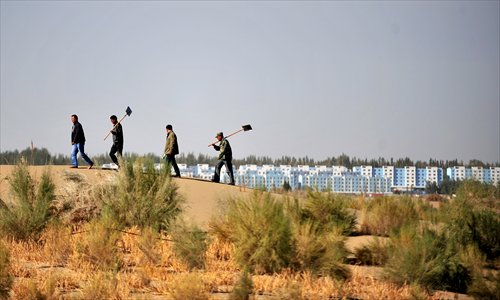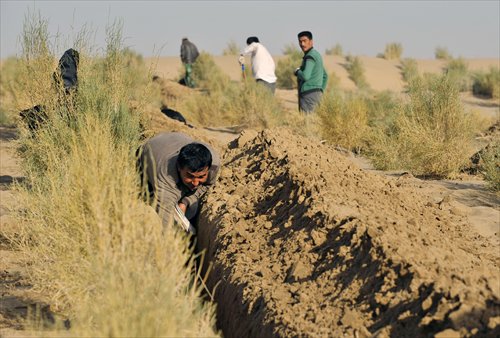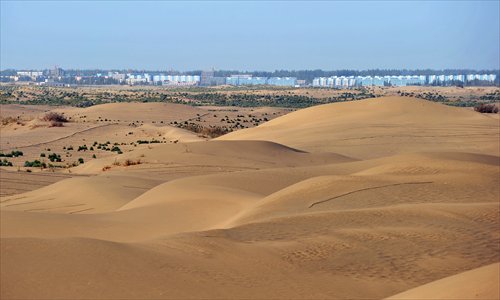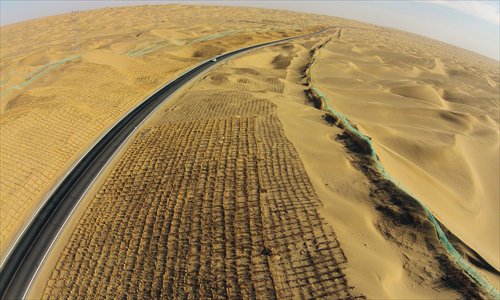HOME >> CHINA
A line in the sand
Source:Global Times Published: 2014-10-23 18:58:03

Workers plant a web of shrubs in the desert to halt the advancing of sand dunes. Photo: CFP
Xinjiang, in Northwest China, is home to the country's biggest deserts. Fighting desertification is a constant for cities deep in the region, to avoid the fate of being buried like the ancient Loulan civilization more than 1,600 years ago.
The town of Qiemo, in the middle of the Taklimakan Desert, China's largest, has been fighting against the sand dunes pushing towards it. On the other side of the Qarqan River, the sand dunes are only two kilometers away at the nearest point. Three times in the town's history, the river running through it was diverted by shifting desert sands.
Qiemo kicked off a forestation project in 1998, sending thousands of workers to plant trees and shrubs fit for the desert climate to halt the advance of dunes.
As a result, more than 80,000 mu (53,333 hectares) of desert has been greened, and a green belt seven kilometers wide has been built in the path of the advancing desert. Meteorological data show that in the past five years, the number of sandstorms was reduced from 21 days a year to 14 days, and dusty days decreased from 193 days a year to 137 days.
Trying to convert the burden of forestation into advantage, Qiemo attempted to plant Chinese dates, lyceum, and desert berries to boost the economy.
As of September this year, nearly five square kilometers' worth of cash crops had been planted.
Global Times

Workers check the "green belt" between the desert and the town of Qiemo. Photo: CFP

People plant seeds deep in the sand. Photo: CFP

Residential buildings of Qiemo are clearly visible from the sand dunes of Taklimakan Desert. Photo: CFP

A belt of low-lying vegetation has been created along the highway across the Taklimakan Desert. Photo: CFP
Posted in: In-Depth